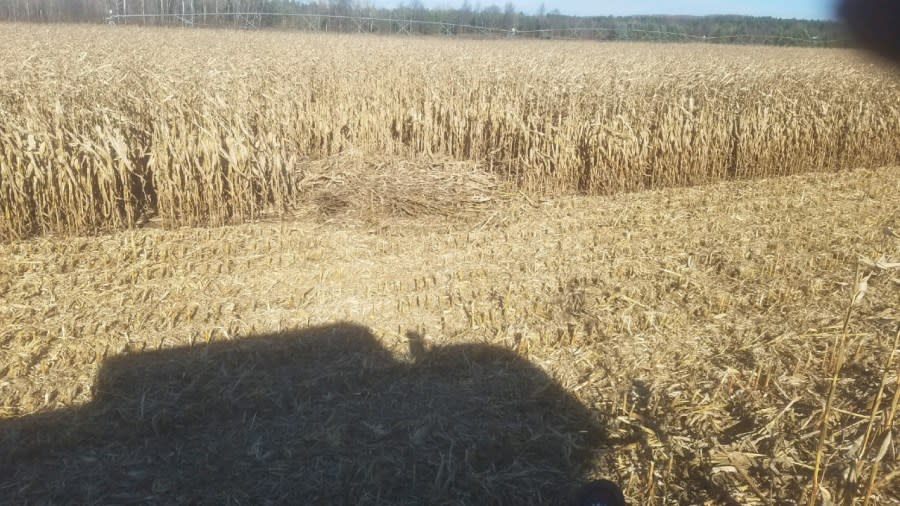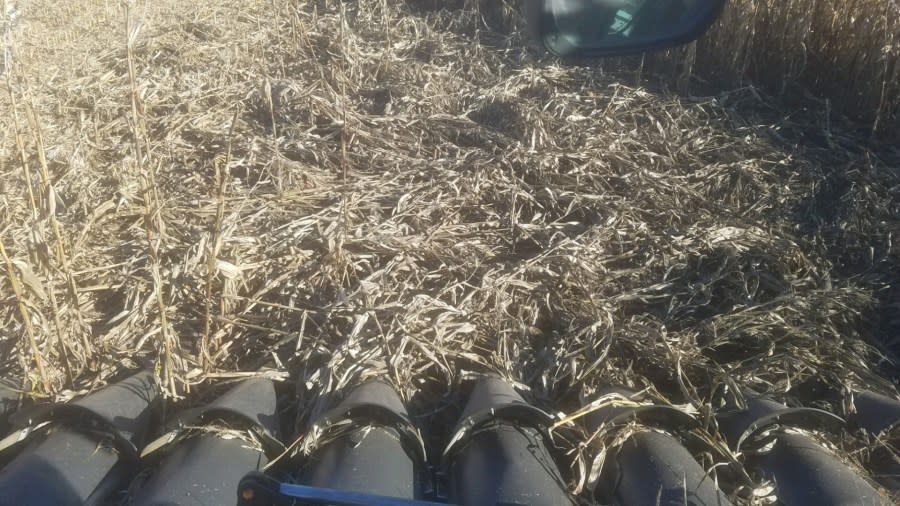Shifting bear population could pose big problem for local farmers
BENZONIA, Mich. (WOOD) — Black bears that were once common in West Michigan are slowly returning, posing a threat not just to residents and pets, but to local farmers and their bottom lines.
The latest data from the Michigan Department of Natural Resources says the black bear population in the Lower Peninsula has risen 55% from 2012 — with approximately 2,000 bears roaming the northern portion of the peninsula.
DNR: Black bear population slowly creeping down into West Michigan
And though that surge has stabilized, that fast increase has forced Michigan’s black bears to move further south, even as far as Muskegon and Newaygo counties, searching for land and food to claim as their own.
Unfortunately, for farmers like Ron Gillison, bears seem to love his corn fields. He fears as the bear population moves south, it will become a bigger problem for more and more farmers.
Gillison is no stranger to the farm industry. He grew up on a farm, raised cattle as a high schooler and now oversees 22 farms and runs a company that manufactures farm equipment in Benzie and Oceana County.
He told News 8 that he remembers seeing his first bear on one of his farms in the 1970s. He saw a few more in the 1980s. But over the last 10 to 15 years, bears have become a major problem.
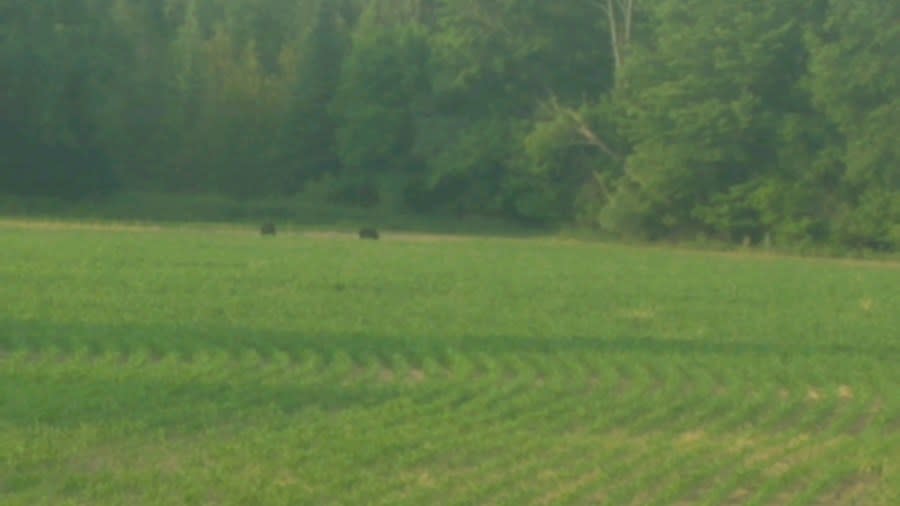
“It kind of moves around a little bit, varies year to year depending on how much pressure we put on them. But the bear damage can be quite severe because they move into the fields and they don’t leave,” Gillison explained. “They like our irrigated stuff. They move into those fields because they feel secure because the corn is tall and thick. Mainly, the sows and cubs move in, and they raise them there.”
He estimates that bears damage crops on roughly two-thirds of his farms in any given year.
Sign up for the News 8 daily newsletter
“It might be a strip anywhere from 30 to 60 foot wide or even just a big square block where they have knocked every stalk down. They just laid there and ate half of it off the top, then got another one and ate another half. They’re kind of sloppy eaters,” Gillison said. “It’s as much psychological as it is economical because, as a farmer, we take pride in what our fields look like.”
While deer are also a problem, Gillison says bears make a bigger impact on profits.
The downed corn stalks are a telltale sign that a bear had visited a farmer’s corn field. (Courtesy Ron Gillison) The downed corn stalks are a telltale sign that a bear had visited a farmer’s corn field. (Courtesy Ron Gillison)
“Deer do a fair amount of damage, but they don’t like good corn. They like corn that is a little stunted, so they can see. They get nervous when the corn stalks are a long way above their head,” he said.
And corn isn’t the only crop at risk. Orchards can also become a perennial target.
“The local growers that I work with. A lot of their younger cherry trees don’t get harvested the first few years because it’s not economically feasible. There’s not enough fruit on them. But when you leave that fruit there, the bears will come in and they will tear a tree right down to the ground,” he said.
Gillison has worked with the DNR to trap bears on his properties, which are then released anywhere from 70 to 100 miles away. In 2022, he claims he trapped seven bears in the span of two weeks.
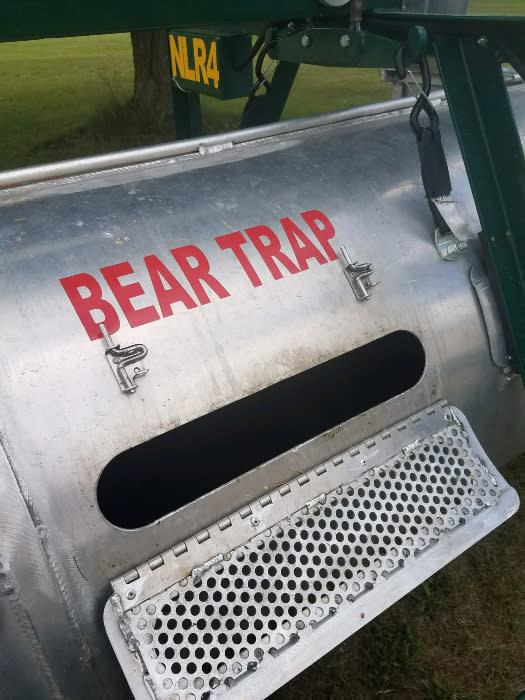
He has also opened up his land to hunters using the Crop Damage Permit Program. That was established in 2014 thanks to legislation supported by state Sen. Ed McBroom, R-Vulcan, a farmer who has personal experience with bear damage.
“One bear can do an outstanding amount of damage,” McBroom explained to the Great Lakes Echo. “It’s not just frustrating because of the money. You spend a lot of hours planting the field out, picking rocks. You fertilize, you spread manure. I spend a lot of hours (on my fields).”
DNR starts field trial to vaccinate wild deer for bovine tuberculosis
Cody Norton, a bear specialist with the Michigan DNR, says the Crop Damage Permit Program allows hunters to take animals outside of legal hunting season.
“We can issue a permit to a farmer or a landowner with agricultural problems from bears, which allows them to connect with a hunter who has a current year tag,” Norton told News 8. “Then, that hunter can hunt outside of the normal season. So, they can hunt even earlier when that corn or whatever it is might be when the bears are actually targeting it. That might not be during the bear season.”
So, how do we fix the problem? Hunting regulations dictate that you can’t just “harvest” a bear for any reason. State law says bears can only be killed if there is a direct threat to life or property, but crops don’t qualify as “property.”
McBroom attended a Natural Resources Commission meeting earlier this year to talk about bear damage but there doesn’t appear any changes are imminent.
DNR looking for volunteers to monitor water quality on inland lakes
“I think he at least made some comments that (McBroom) was interested in trying to update (the 2014 legislation) or build upon it or look for ways to be able to mitigate conflict, but there is nothing specific that I know of right now,” Norton said.
A representative from McBroom’s office confirmed to News 8 that there are no bills on the immediate horizon. Instead, the DNR and other agencies will work on alternative solutions, mostly non-lethal.
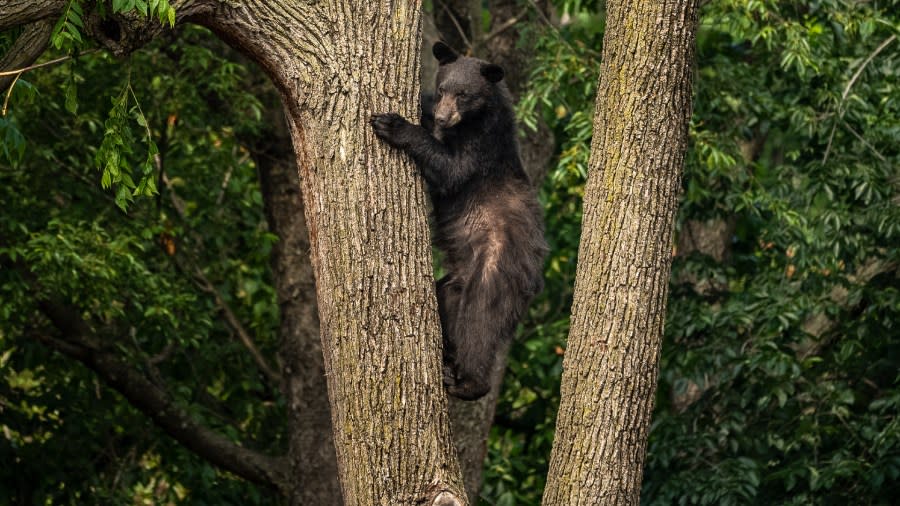
The U.S. Department of Agriculture has recently added a new position in the DNR’s Baldwin Unit — which covers the northern Lower Peninsula — devoted to addressing bear damage. There is a heavy emphasis on things like electric fence systems, noisemakers and even scent deterrents. But they aren’t always practical and not necessarily successful.
“(We are) trying to develop plans for how they can try to mitigate damage from bears, loaning out or helping them set up their own electric fence systems, especially for apiaries or smaller (farms). But it depends. If you have thousands of acres or hundreds of acres of corn, it might not be something you can fence,” Norton explained.
State lawmakers urge DNR to decide against criminal charges in wolf incident
So far, the farm damage in West Michigan isn’t as extensive as what the state has seen further north. Norton hopes it stays that way.
From 2012 to 2016, nuisance reports involving bears quadrupled in the northern Lower Peninsula. But ever since, the levels have stabilized, and 2022 had the lowest number of calls since 2015.
Are bears learning the lay of the new land and adapting? Are the non-lethal techniques working? Time will tell. For now, farmers further north like Gillison will have to continue to fight the pests each year.
“I carry a good-sized handgun with me when I’m in the corn fields,” he said. “When you walk onto a bear that’s within 8, 10 feet of you, it’s not a lot of fun.”
For the latest news, weather, sports, and streaming video, head to WOODTV.com.
